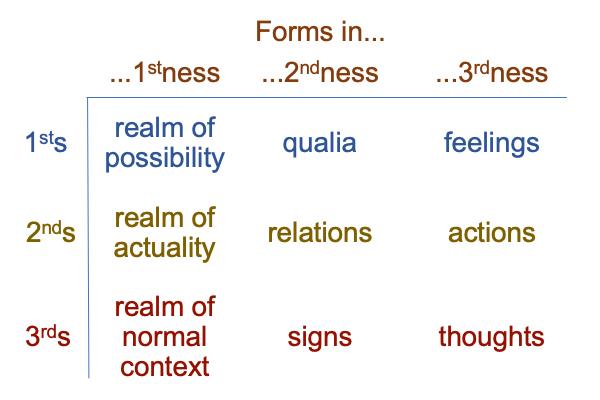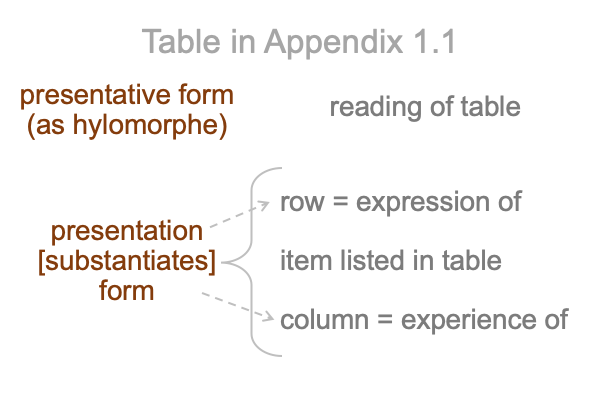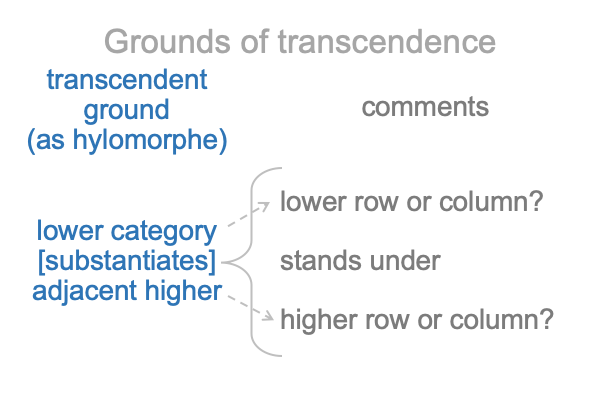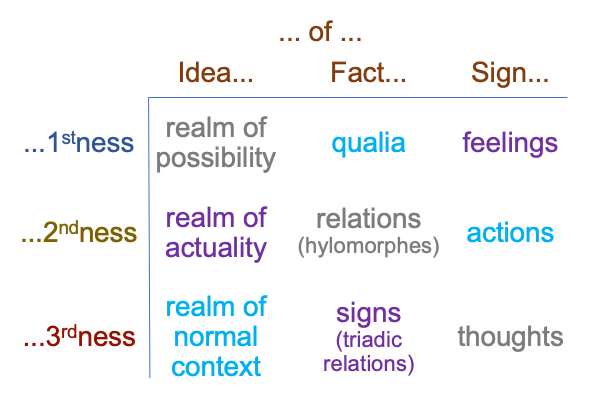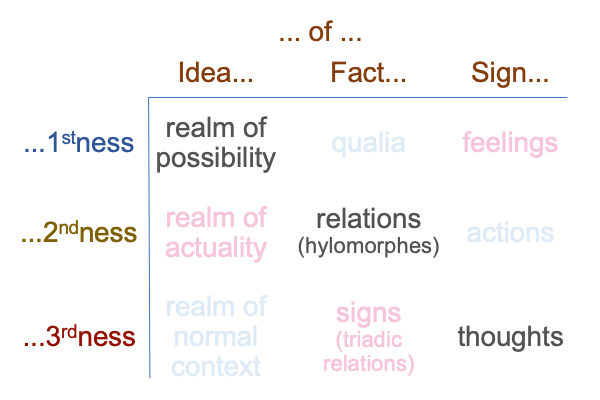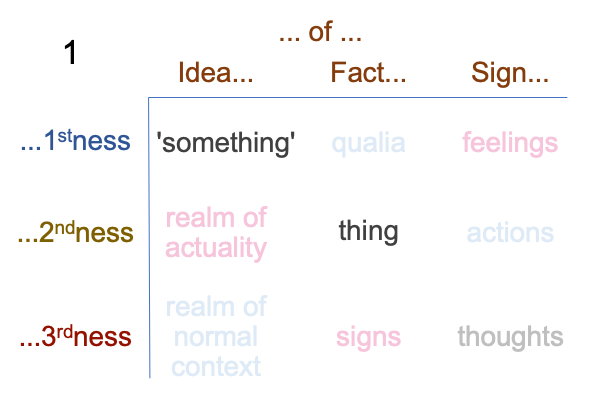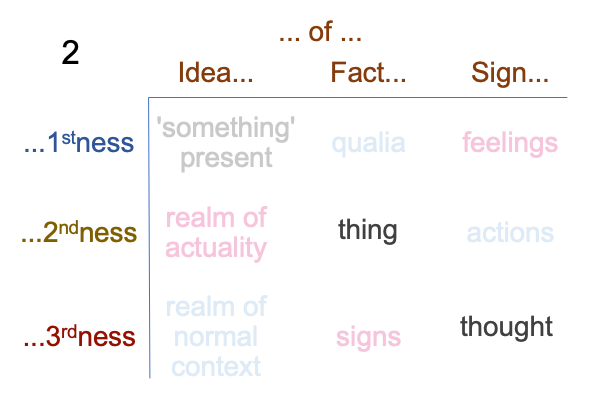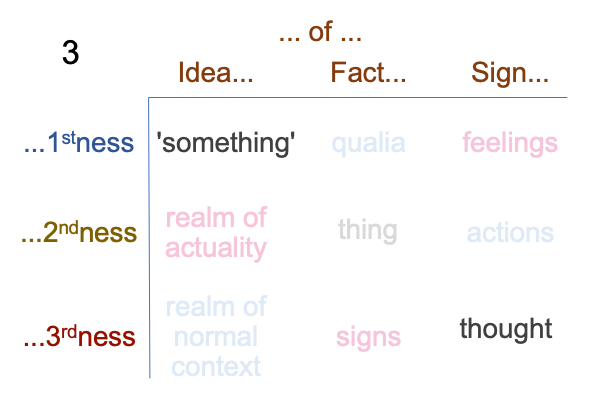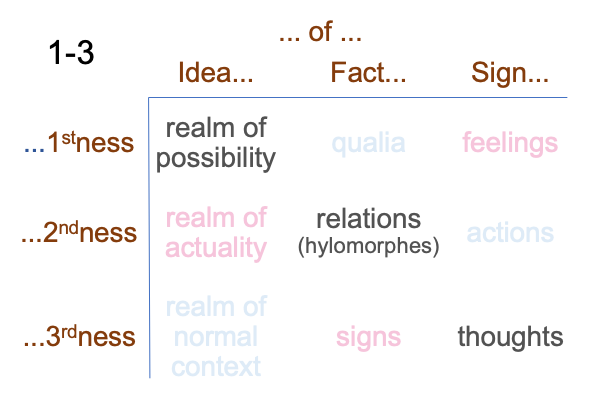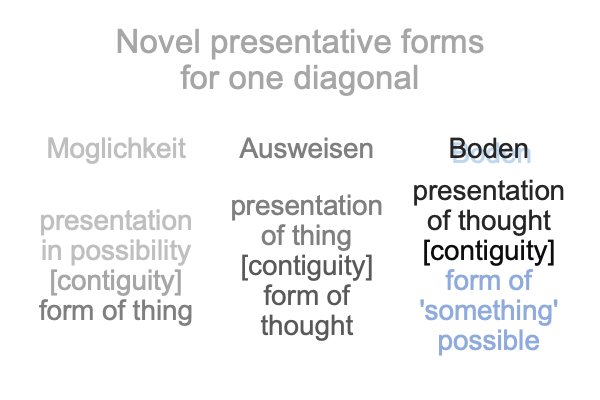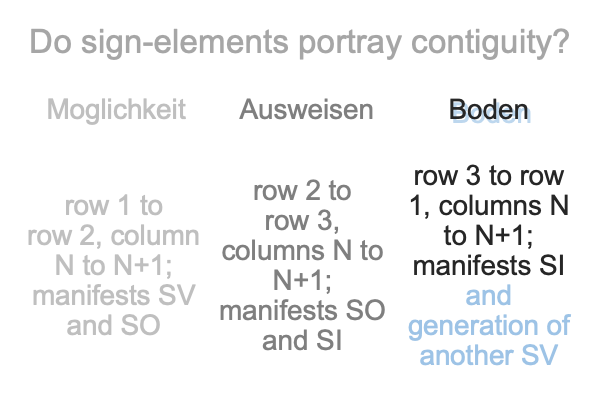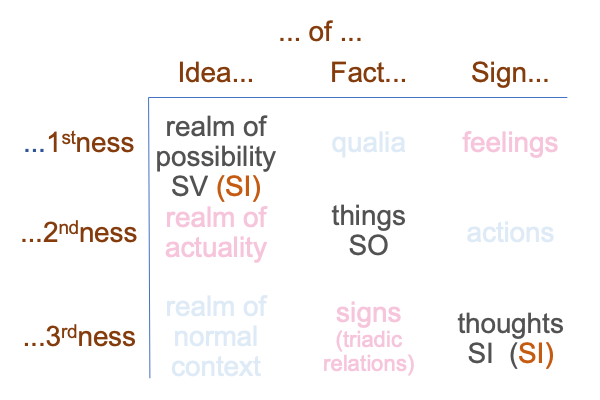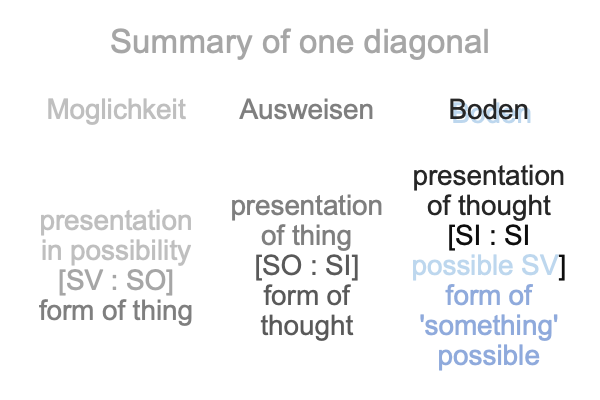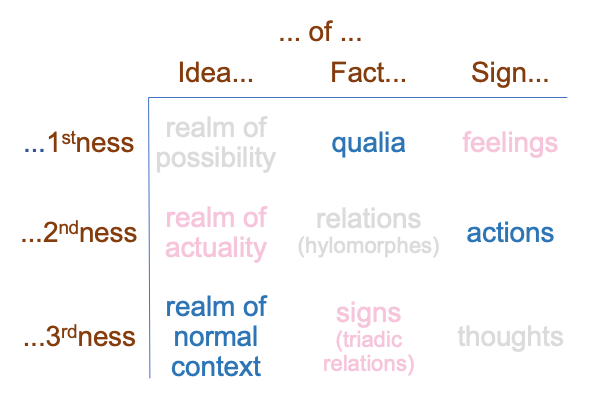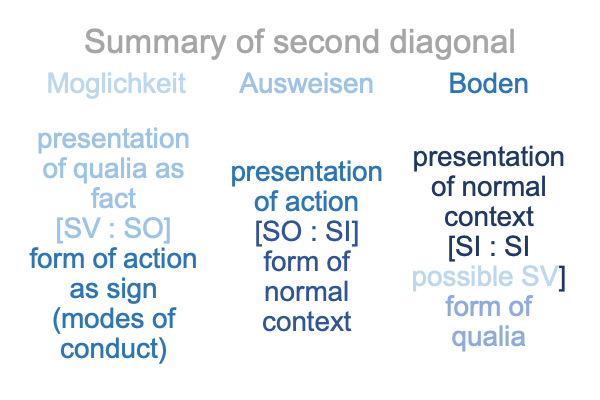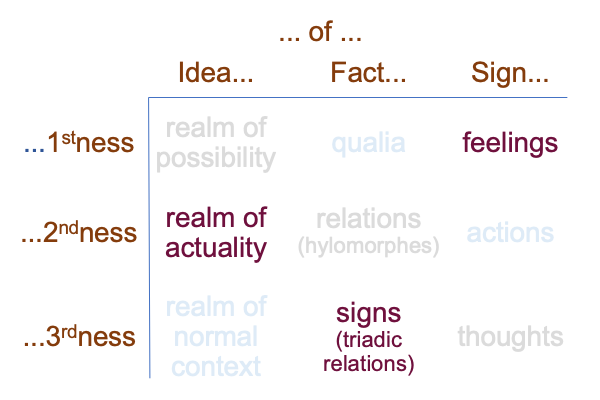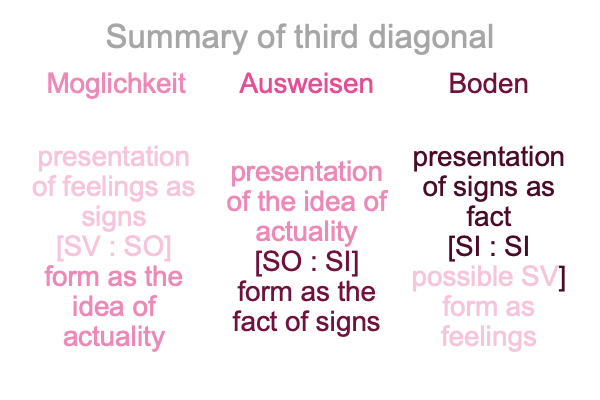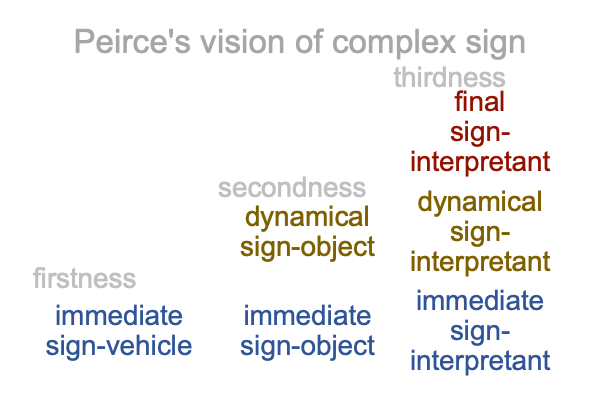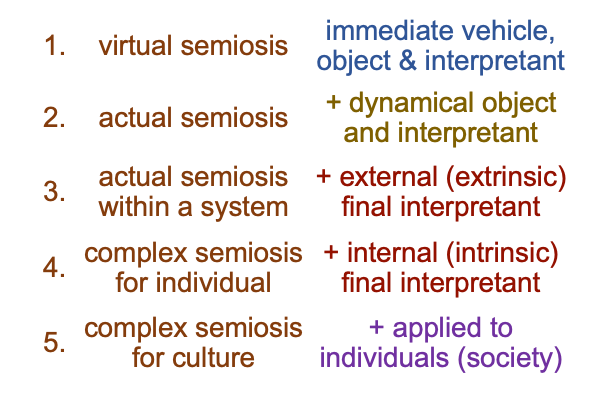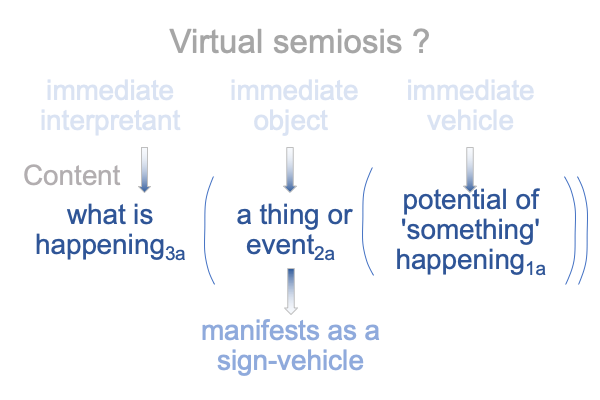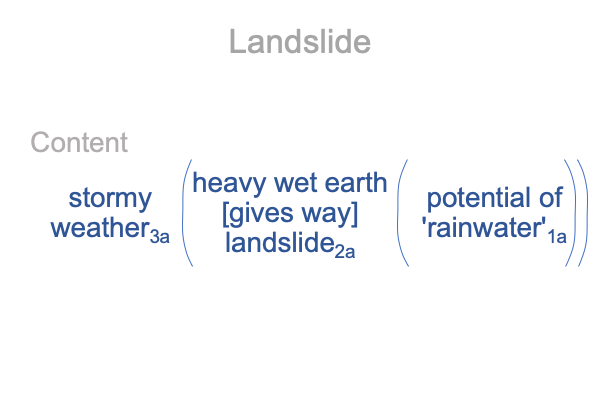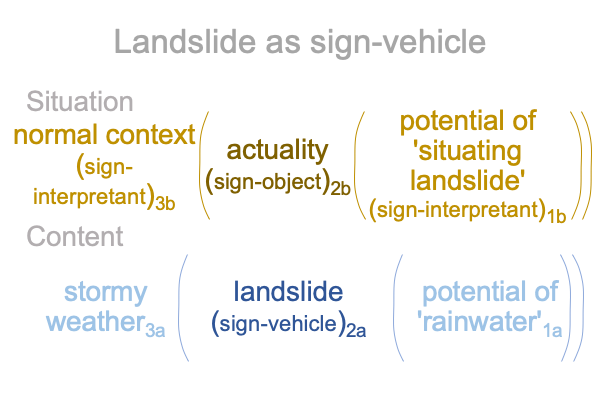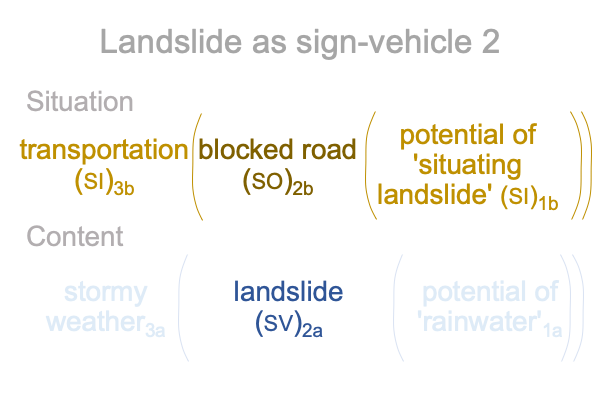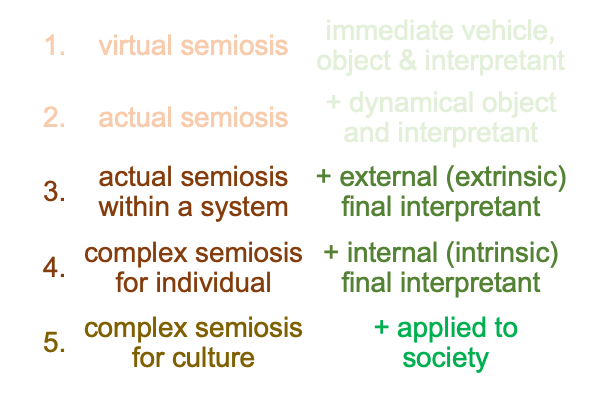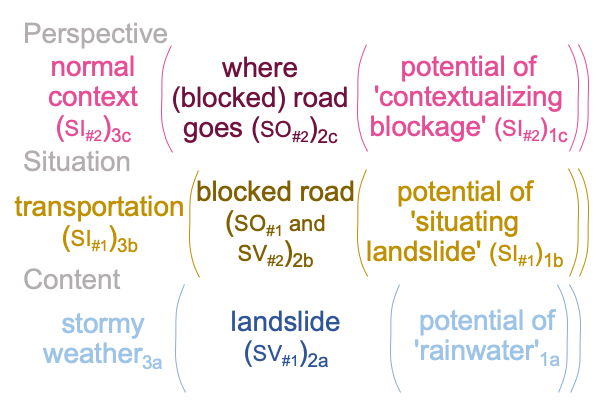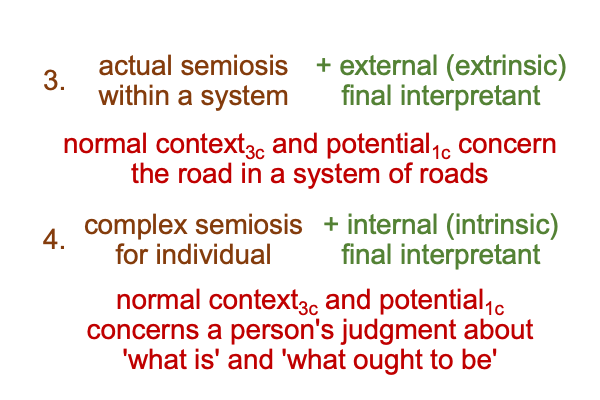Looking at Appendix 1.1 in Brian Kemple’s Book (2019) “The Intersection” (Part 1 of 18)
0028 This is the second blog in a series.
Looking at Brian Kemple’s Book (2019) “Intersection” appears in Razie Mah’s blog from May 15 through 18, 2023. In that brief examination (points 0001-0027), a technical category-based definition of the term, “intersection” is shown to mesh with the theme of Kemple’s book, whose full title is The Intersection of Semiotics and Phenomenology: Peirce and Heidegger in Dialogue (Walter de Gruyter, Boston/Berlin).
To me, that is fascinating.
0029 In this series of blogs, I examine Kemple’s appendices.
Yes, he has more than one appendix.
Plus, there are subdivisions.
0030 Appendix 1.1 is titled, “Presentative forms and the grounding of transcendence”. My associations will draw upon A Primer on the Category-Based Nested Form and A Primer on Sensible and Social Construction, as well as A Primer on Natural Signs, Comments on John Deely’s Book (1994) New Beginnings, and Comments on Newell Sasha’s Article (2018) “The Affectiveness of Symbols”. These primers and comments touch base with Razie Mah’s masterwork, How To Define The Word “Religion”, which is available, along with the other mentioned e-works, at smashwords and other e-book venues.
0031 The title of Appendix 1.1 contains two technical terms.
“Presentative forms” is a term coined by Jacques Maritain and literally means a form that is substantiated by its presentation, rather than by matter. The hylomorphe is presentation [substantiates] form, rather than matter [substantiates] form.
“The grounding of transcendence” is a phrase used by Martin Heidegger. It conveys what the presentative form accomplishes. The presentative form accomplishes more than matter-substantiated form, because it leads to (grounds) another form, which is located at a higher categorical level (transcendence).

0032 Surely, this implies that presentative forms and the grounding of transcendence coincide in a particular way. The “matter” of the presentative form associates to the adjacent lower category of its corresponding “form”.
Is this is a general feature of presentative forms?
Well, the claim is a good working hypothesis.

